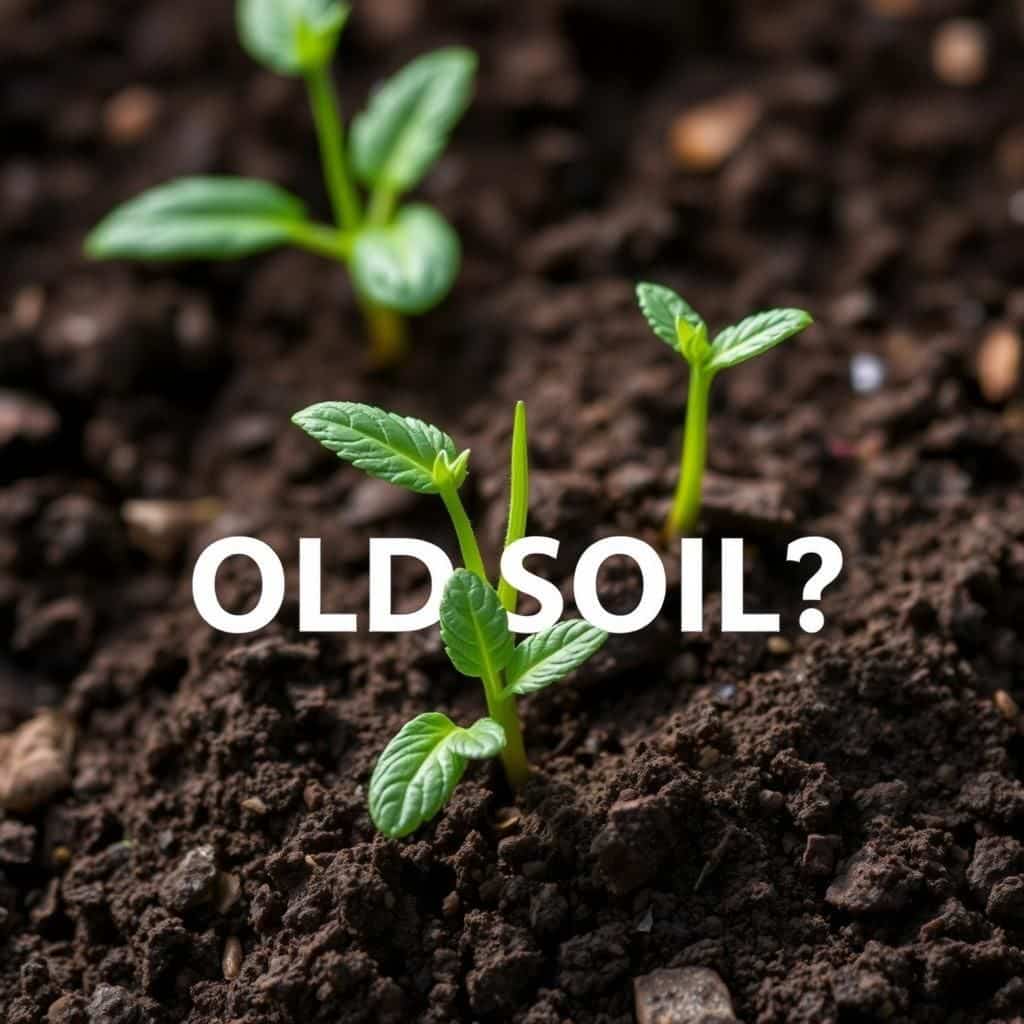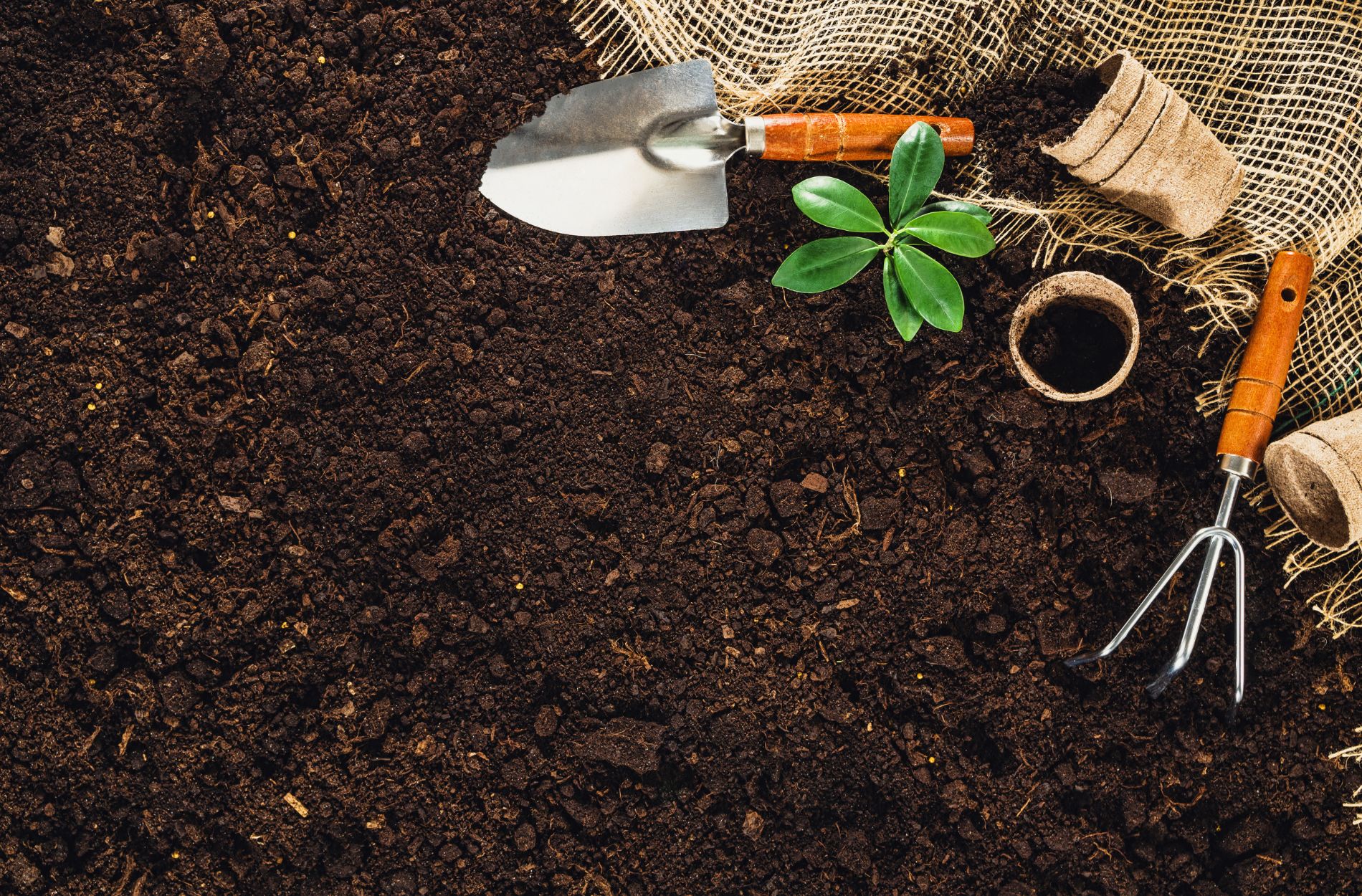How Do You Rejuvenate Old Soil? Essential Tips for Revitalizing Your Garden Soil

Revitalizing old soil is crucial for any gardener looking to produce healthy and thriving plants. Over time, soil can become depleted of essential nutrients, leading to poor growth and diminished yields. However, rejuvenating your garden soil doesn't have to be a daunting task. With the right techniques and knowledge, you can restore its vitality and create an ideal environment for plants to flourish. In this article, we will explore essential tips and methods for revitalizing tired soil, ensuring that your garden remains productive year after year. Discover how simple practices can breathe new life into your garden’s foundation.
How to Rejuvenate Old Soil
Rejuvenating old soil involves several critical steps to restore its fertility and structure. Start by conducting a soil test to understand its nutrient composition and pH level, which will guide subsequent amendments. Incorporate organic matter, such as compost or well-rotted manure, to enhance nutrient content and improve soil structure. Additionally, the use of cover crops can help prevent erosion, suppress weeds, and add organic material when tilled back into the soil. Regularly rotating crops can also prevent nutrient depletion and break pest cycles, promoting a healthier ecosystem. Lastly, avoiding excessive tillage can help maintain soil structure and protect beneficial microorganisms.
Soil Testing
Conducting a thorough soil test is the first step to rejuvenating old soil. This test measures nutrient levels, pH, and organic matter content, providing valuable insights into what amendments are necessary. By knowing which nutrients are lacking, you can tailor your approach, applying specific fertilizers or soil conditioners to address deficiencies and create a well-balanced environment for plant growth.
Adding Organic Matter
Incorporating organic matter is vital for restoring the health of old soil. Materials such as compost, leaf mold, or aged manure not only supply necessary nutrients but also improve soil structure and drainage. The added organic matter promotes microbial activity, leading to better nutrient cycling and overall soil fertility, making it easier for plants to establish strong root systems.
Utilizing Cover Crops
Utilizing cover crops is beneficial for rejuvenating old soil by preventing soil erosion and suppressing weeds. Planting crops like clover or rye during the off-season can protect the soil while enriching it with organic material when tilled in. These crops also improve soil structure and enhance moisture retention, making the soil more resilient to extreme weather conditions.
Crop Rotation
Implementing crop rotation is essential for maintaining soil fertility over time. By alternating different plant families, you can prevent the depletion of specific nutrients and disrupt pest life cycles. This practice not only enhances soil health but also promotes diversity, which can lead to a more balanced ecosystem and reduced reliance on chemical fertilizers.
Minimizing Tillage
Minimizing tillage is an effective practice for rejuvenating old soil. Excessive tilling can disrupt soil structure, destroy beneficial organisms, and lead to compaction. By adopting conservation tillage methods or no-till practices, you can protect the soil's natural state, promote healthy microbial life, and improve moisture retention, all crucial for long-term soil health.
| Practice | Benefits |
|---|---|
| Soil Testing | Identifies nutrient deficiencies and guides amendments. |
| Adding Organic Matter | Improves soil structure and increases nutrient availability. |
| Utilizing Cover Crops | Prevents erosion and enhances soil fertility. |
| Crop Rotation | Maintains soil health and prevents pest build-up. |
| Minimizing Tillage | Protects soil structure and promotes beneficial organisms. |
How do you bring old soil back to life?

To bring old soil back to life, it's important to understand the factors that contribute to its health and fertility. Old soil may have lost nutrients, structure, and biological activity over time due to factors like erosion, lack of organic matter, or inappropriate management practices. Revitalizing such soil involves a series of steps that focus on improving its physical, chemical, and biological properties.
Understanding Soil Structure
To revitalize old soil, first grasp its structure. The arrangement of soil particles affects water retention, root development, and nutrient availability. A well-structured soil allows for better aeration and drainage, making it easier for plants to thrive.
- Assess the physical properties - Evaluate the texture and granulation of the soil.
- Improve particle aggregation - Use organic matter like compost to enhance crumb structure.
- Aerate the soil - Consider mechanical aeration methods to promote better airflow.
Adding Organic Matter
Incorporating organic matter is key to restoring fertility. Organic matter enhances soil structure, increases moisture retention, and promotes microbial activity, which are all essential for nutrient cycling.
- Compost - Mix well-decomposed compost into the soil to provide nutrients and enhance biological activity.
- Green manures - Grow cover crops like clover or rye to add organic material when tilled back into the soil.
- Mulching - Apply a layer of organic mulch on top to reduce erosion and maintain moisture.
Incorporating Microbial Diversity
Promoting microbial diversity is crucial for a healthy soil ecosystem. Diverse microbes break down organic materials, release nutrients, and suppress diseases.
- Inoculate with beneficial bacteria and fungi - Introduce commercial products that contain these microorganisms.
- Encourage native microbes - Create conditions favorable for existing microbial populations by reducing chemical input.
- Practice crop rotation - Rotating different crops can build a diverse microbial community and improve soil health.
Balancing Soil pH
Soil pH significantly influences nutrient availability and microbial activity. Testing the pH helps understand whether the soil is too acidic or alkaline for optimum plant growth.
See also:
- Test the soil pH - Use a soil test kit to determine the current pH level.
- Adjust pH if necessary - Add lime to raise pH or sulfur to reduce pH based on test results.
- Monitor regularly - Routine testing ensures the soil remains within the ideal range for plant growth.
Implementing Sustainable Practices
Employing sustainable practices is vital in maintaining revitalized soil in the long term. These practices can mitigate soil erosion, improve moisture retention, and enhance overall soil health.
- No-till farming - Reduces soil disturbance and protects beneficial soil organisms.
- Contour farming - Follows the natural contour of the land to minimize erosion and maximize water retention.
- Cover cropping - Planting cover crops in off-season periods provides ground cover, reducing erosion and enhancing nutrient cycling.
Can you rehydrate old soil?
:strip_icc()/BHG-Rehydrate-Potting-Soil-9os67ZXnqVCAGxKMktMQRu-cf43091495b44329a2624cba6925e79f.jpg)
Yes, you can rehydrate old soil, and this process is crucial for improving soil health and enhancing plant growth. Rehydrating old or dry soil helps to restore its structure, aeration, and nutrient content, which can often deteriorate when water is limited. There are various methods and techniques to effectively achieve soil rehydration.
Understanding Soil Composition
Understanding the composition of old soil is critical to rehydrating it effectively. Soil consists of a mix of minerals, organic matter, water, and air. Over time, drought conditions may lead to the degradation of organic matter, which affects water retention and soil structure. To successfully rehydrate the soil, consider the following aspects:
- Monitoring moisture levels: Analyze the current moisture content in your soil.
- Identifying soil type: Determine if your soil is sandy, clayey, or loamy to select the right rehydration techniques.
- Assessing organic matter: Check the amount of decomposed material present to enhance water retention.
Methods for Rehydrating Soil
There are several effective methods for rehydrating old soil. These methods can vary depending on the soil type and the specific conditions of your garden or landscape. Here are some common techniques:
- Deep watering: Use slow and deep watering techniques to allow water to penetrate deeper into the soil layers.
- Mulching: Apply a layer of organic mulch to retain moisture and regulate temperature.
- Composting: Add compost to introduce nutrients and improve soil structure, thereby enhancing moisture retention.
Learning to Manage Soil Moisture
Managing soil moisture is essential in the rehydration process. Effective management can prevent soil from drying out again and promote a stable environment for plant roots. Consider these practices:
- Regular monitoring: Check moisture levels frequently and adjust watering schedules accordingly.
- Establishing proper drainage: Ensure water can flow through the soil without pooling, which can lead to root rot.
- Using soil moisture sensors: Implement technology to monitor moisture levels accurately and in real-time.
Benefits of Rehydrating Old Soil
Rehydrating old soil offers numerous benefits for both plant health and ecosystem balance. The advantages of improving the moisture content and structure of the soil include:
- Enhanced growth: Healthy plants thrive in well-hydrated soil with good nutrient content.
- Better disease resistance: Plants grown in adequately hydrated soil are generally more resistant to diseases.
- Increased biodiversity: Healthy soil supports a diverse range of microorganisms, which are vital for overall ecosystem health.
Common Challenges in Rehydrating Soil
Despite its benefits, rehydrating old soil can come with several challenges. Being aware of these potential issues can help you tackle them more effectively. Common challenges include:
- Soil compaction: Compacted soil can restrict water movement and root growth.
- Lack of organic matter: Low organic content makes it harder for soil to retain moisture.
- Extreme weather conditions: Droughts and heavy rains can complicate effective rehydration efforts.
Is it possible to revive dead soil?

Reviving dead soil is a complex but achievable task that involves a series of interventions and practices aimed at restoring its health and fertility. Dead soil typically refers to soil that has lost its nutrients and biological activity, rendering it unable to support plant life effectively. The following details various methods and strategies that can be employed to bring dead soil back to life.
Understanding Dead Soil
Dead soil is characterized by a lack of essential nutrients, minimal microorganism activity, and poor physical structure. Understanding why soil becomes dead is crucial for effective revival efforts. Common causes include:
- Nutrient depletion due to continuous monoculture farming.
- Pesticides and chemical fertilizers that kill beneficial organisms.
- Soil erosion that removes the fertile top layer.
Assessing Soil Health
Before attempting to revive dead soil, it is essential to assess its current health and composition. This assessment typically involves:
- Conducting a soil test to analyze pH, nutrient levels, and microbiological activity.
- Identifying compaction issues that can hinder water and root penetration.
- Evaluating the biodiversity of organisms present in the soil, including fungi and bacteria.
Techniques for Reviving Dead Soil
Several techniques can be implemented to revive dead soil effectively. These techniques aim to restore nutrient levels and improve the soil structure:
See also:
- Composting organic matter such as kitchen scraps and leaves to enrich soil with nutrients.
- Cover cropping, where specific plants are grown to improve soil structure and fertility.
- Utilizing biochar, which can improve soil aeration and act as a habitat for beneficial microbes.
Importance of Organic Matter
Incorporating organic matter into dead soil is one of the most effective ways to revitalize it. Organic matter helps in:
- Enhancing nutrient retention in the soil.
- Improving microbial activity, leading to a healthier ecosystem.
- Increasing water-holding capacity, which helps in drought resilience.
Long-term Soil Management Practices
To sustain improvements in soil health over time, adopting long-term management practices is vital. These practices include:
- Implementing crop rotation to prevent nutrient depletion and pest accumulation.
- Reducing chemical inputs and opting for organic alternatives.
- Practicing minimal tillage to preserve soil structure and prevent erosion.
What is the best way to rejuvenate soil?

The best way to rejuvenate soil involves a combination of practices aimed at improving its structure, nutrient content, and biological activity. Here are several effective methods to rejuvenate soil:
Understanding Soil Composition
To effectively rejuvenate soil, it is crucial to understand its composition, including the balance of organic matter, minerals, water, and air. Conducting a soil test can reveal pH levels, nutrient deficiencies, and contaminant presence.
- Perform a soil test to analyze pH and nutrient levels.
- Add amendments based on test results to correct pH or nutrient deficiencies.
- Identify the soil texture (sand, silt, clay) to inform rejuvenation strategies.
Adding Organic Matter
Incorporating organic matter is one of the most effective ways to rejuvenate soil. Organic materials enrich the soil by improving fertility and structure while fostering beneficial microbial activity.
- Add compost to provide essential nutrients and increase moisture retention.
- Use well-rotted manure to enhance soil fertility.
- Consider green manure crops, which are grown specifically to be plowed back into the soil.
Implementing Crop Rotation
Crop rotation is a fundamental practice that helps maintain soil health by alternating the types of crops grown in a specific area. This strategy reduces nutrient depletion and pest build-up.
- Switch the types of crops planted each season to enhance nutrient diversity.
- Plant legumes that can fix nitrogen in the soil, benefiting subsequent crops.
- Avoid planting the same crop in the same location consecutively to prevent disease.
Enhancing Soil Aeration
Soil compaction can hinder root growth and water infiltration. Enhancing soil aeration can rejuvenate its structure, allowing it to better retain moisture and nutrients.
- Use a garden fork or aerator to physically loosen compacted soil.
- Incorporate cover crops that have deep root systems to naturally aerate the soil.
- Practice no-till farming to minimize soil disturbance.
Utilizing Mulch
Mulching is an effective technique to rejuvenate soil by retaining moisture, suppressing weeds, and gradually increasing organic matter as it decomposes.
- Apply organic materials like straw, wood chips, or bark to create a protective layer.
- Replenish mulch regularly to enhance its benefits and maintain soil health.
- Ensure the mulch layer is thick enough to provide effective weed suppression.
Questions from Our Readers
How can I improve the nutrient content of old soil?
To improve the nutrient content of old soil, it's essential to add organic matter such as compost, well-rotted manure, or other decomposed plant material. These amendments not only introduce nutrients but also enhance the soil's structure, allowing for better water retention and aeration. Regularly incorporating these materials will gradually transform depleted soil into a thriving growing medium.
What is the role of cover crops in rejuvenating old soil?
Cover crops play a significant role in rejuvenating old soil by preventing erosion, suppressing weeds, and enhancing soil quality. When these crops are grown and tilled back into the soil, they add organic matter and significantly improve soil structure and nutrient availability, leading to a healthier ecosystem for future plant growth.
How often should I test my soil for rejuvenation?
Testing your soil every 1-3 years is advisable for effective rejuvenation, as it helps determine its nutrient levels, pH balance, and overall health. Regular testing enables you to identify any deficiencies and adjust your amendment strategies accordingly, ensuring that your efforts to rejuvenate the soil remain effective and targeted.
Can using mulch help rejuvenate old soil?
Yes, using mulch can significantly help rejuvenate old soil by retaining moisture, regulating soil temperature, and preventing weed growth. Organic mulches, in particular, break down over time, adding nutrients to the soil while improving its structure and biological activity. This creates a healthier environment for plants to thrive and supports the overall rejuvenation process.
See also:

If you want to read more articles like How Do You Rejuvenate Old Soil? Essential Tips for Revitalizing Your Garden Soil, we recommend you check out our Soil category.
Leave a Reply
Related Articles